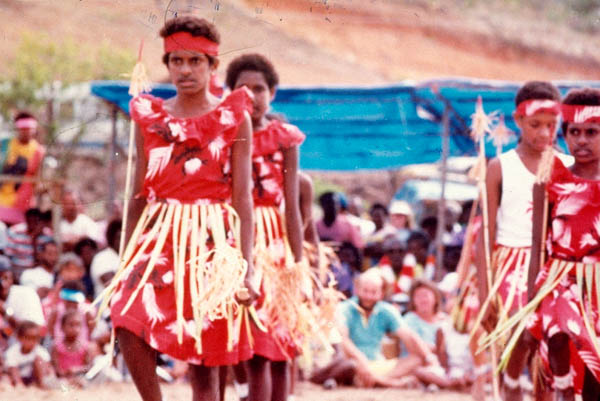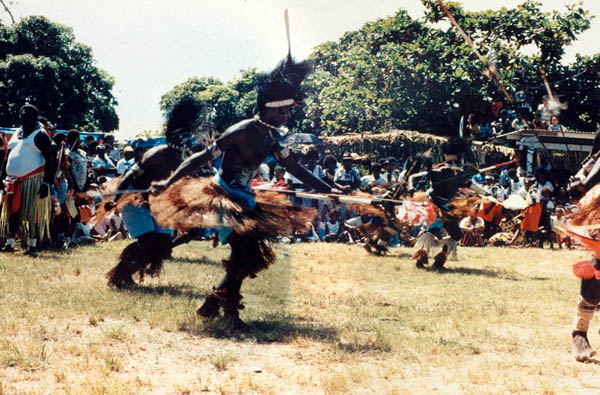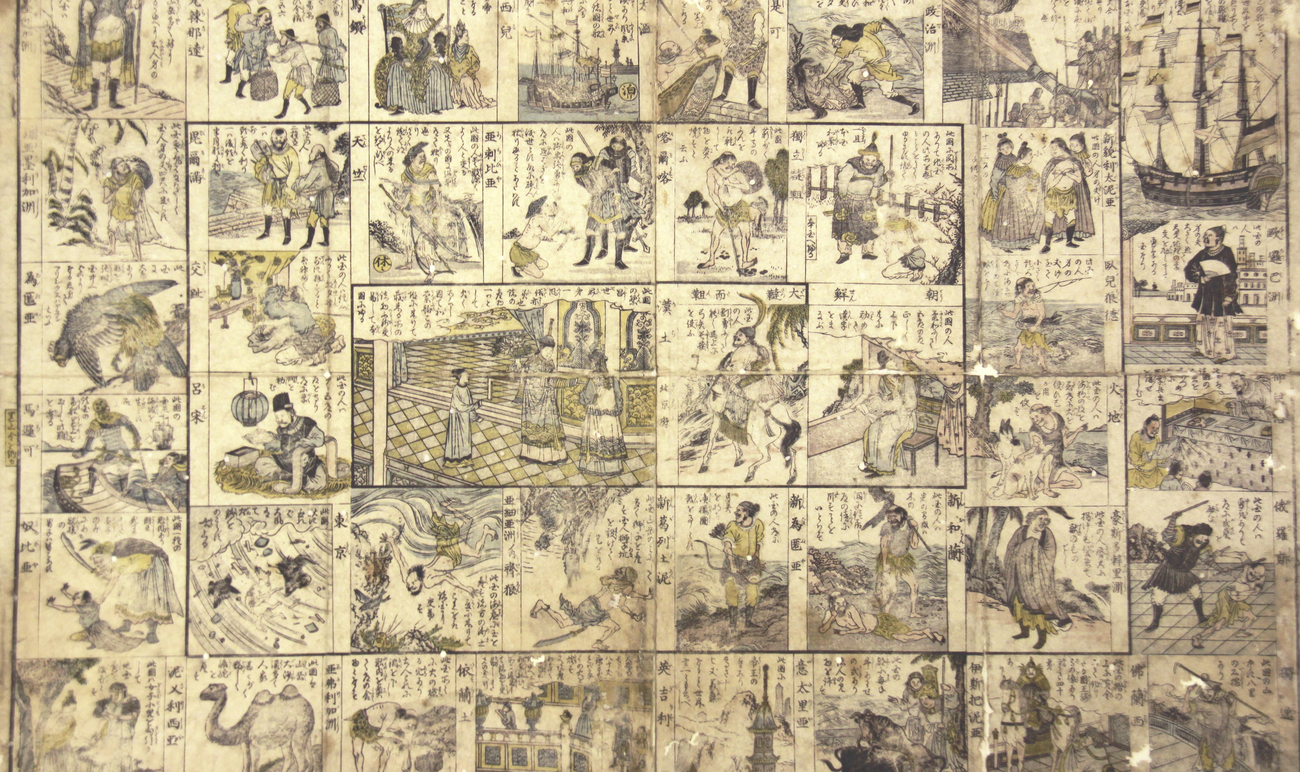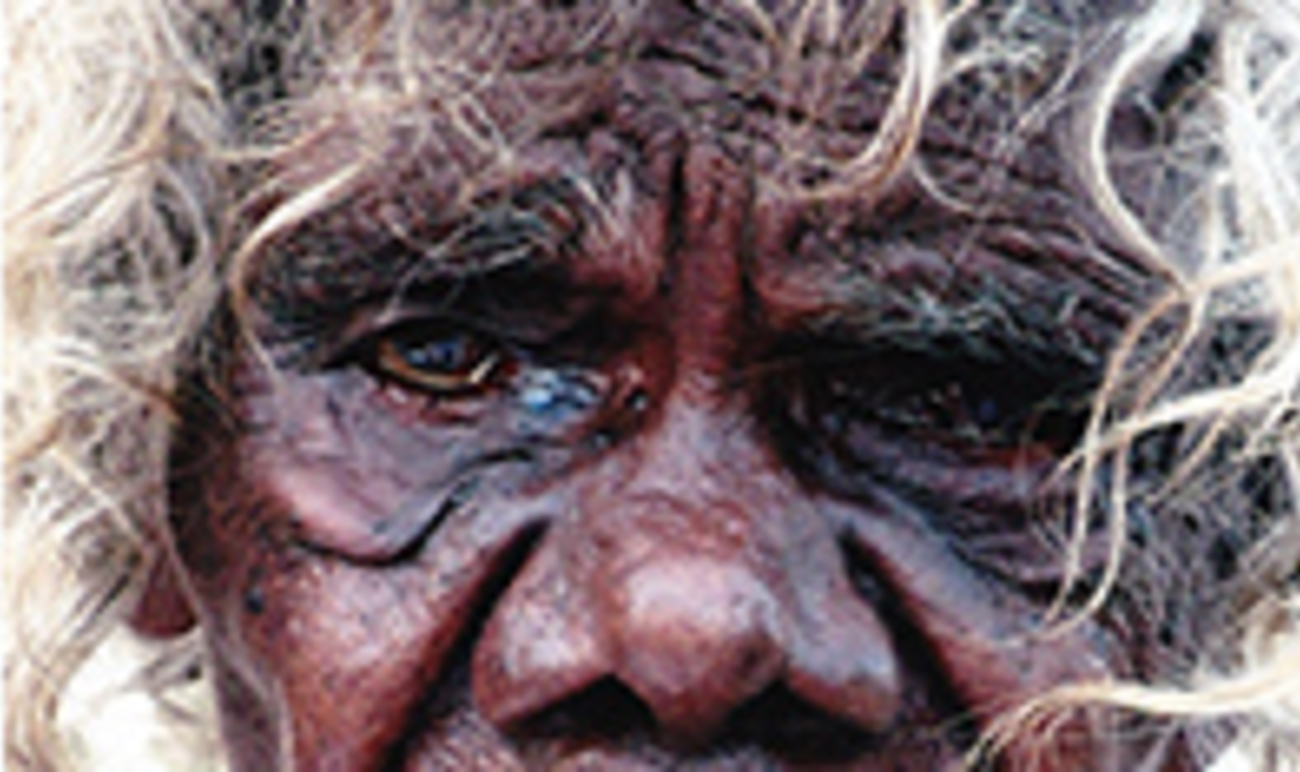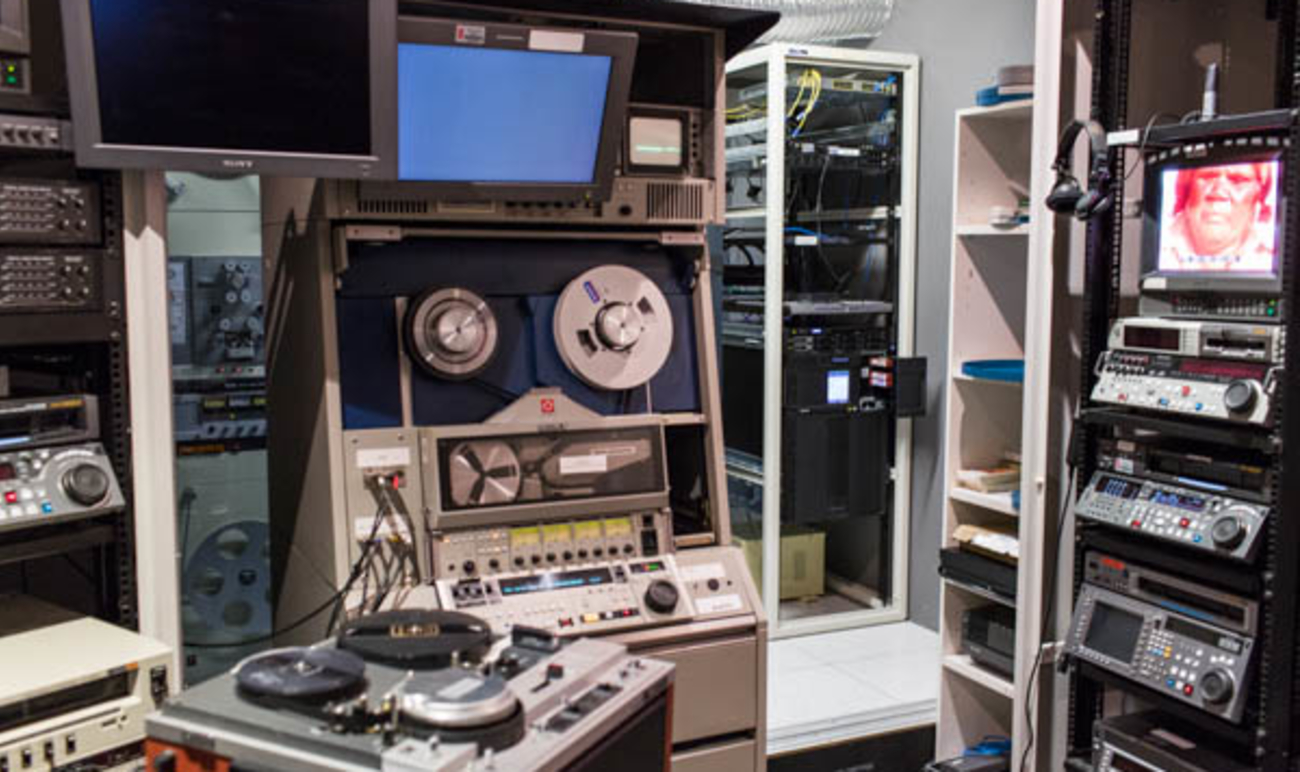Photographs and film from the Ephraim Bani collection
“…our only security is our cultural knowledge that we must carry with us and live by to pass it on to our children and they to their children, so that in the distant future we will still be proven owners of our homeland Zenadth Kes and with cultural knowledge we can have a solid foundation to stand on and fight”
Ephraim Bani in Gab Titui Cultural Centre, 2011

Torres Strait Cultural Festival - traditional dancers performing totem dance of Baizam 'Shark' totemic god, 1989, Bani Collection, BANI.E03.CS-000113674
Torres Strait Cultural Festival - traditional dancers performing totem dance of Baizam 'Shark' totemic god, 1989, Bani Collection, BANI.E03.CS-000113674
Aboriginal and Torres Strait Islander cultural festivals have long been important community events for connecting people to place and reinforcing identity. Cultural festivals facilitate community cultural development, they play a role in sustaining and revitalising Indigenous cultural expression and have positive impacts on the social and emotional wellbeing of Indigenous Australians (Slater, 2012 & 2010).
This post highlights images from the 3rd Torres Strait Cultural Festival (now known as the Winds of Zenadth Festival) photographed by Adhi (Chief) Ephraim Bani in 1989 and held in the AIATSIS Collection.
The first Torres Strait Cultural Festival was held on 8th May 1987 and was initiated by the late Adhi Ephraim Bani. Mr Bani was Chief of Wagadagam clan, Mabuyag Island ( Jervis Island), a renown cultural ambassador for his people, founder of the Gab Titui Cultural Centre and a linguist. Bani was also the inaugural president of the Torres Strait Islanders Corporation for Arts & Literature Production which was the organisation responsible for initially putting on the festival (Gab Titui, 2018).
The photographs featured in this post represent the oldest images of the Torres Strait Cultural Festival held in a cultural institution. The collection was donated by Ephraim Bani and it contains 20 coloured and 20 black and white photographs depicting dancing, the festival ground, a street parade and arts and crafts stalls. The AIATSIS Collection also holds Bani’s film footage of the 1989 festival.
The Winds of Zenadth Cultural Festival is now held every two years on Waiben (Thursday Island) in the month of September. The timing of the festival coincides with the transition from Sager (south east trade winds, dry season) to Nager (north east wind, highest heat and humidity) (McNamara, 2010). The festival is a contemporary event with historical links to a time when the shift in winds signalled that it was initiation time for young men (Bani, 2004). This period of seasonal change was also a time for reinforcing social relationships and engaging in trade and exchange.
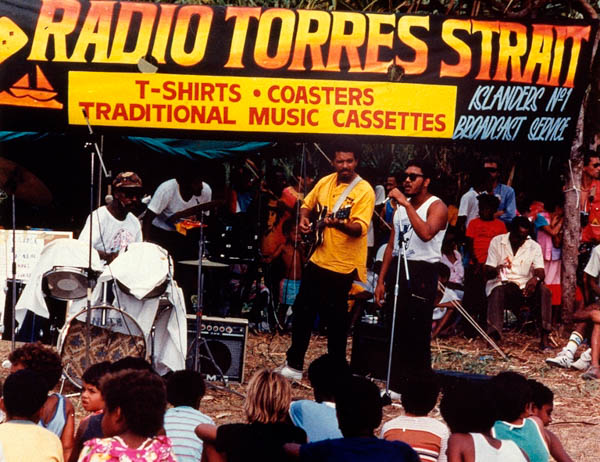
Torres Strait Cultural Festival - Island Youths Contemporary Band, entertaining the eager kids and general audience, 1989, Bani Collection, BANI.E03.CS-000113677
Torres Strait Cultural Festival - Island Youths Contemporary Band, entertaining the eager kids and general audience, 1989, Bani Collection, BANI.E03.CS-000113677
At the week-long festival, people from the Torres Strait and Northern Peninsula Area (NPA) converge on Waiben. The festival includes four days of public dance, a street parade, market stalls and the model outrigger canoe race. The dance performances include combinations of old, known dances and newly choreographed pieces. Each island has their own particular style of dance that incorporate a range of reticulated dance machines and headdresses to enhance the performance. Dance machines are “hand held mechanical moving objects or elaborate moving headdresses” (Gab Titui Cultural Centre, 2009) which can be seen in many of the photographs featured here. Dance machines are termed zamiyakal in Kala Lagaw Ya (the language of the Western and Central Islands), and Kab Teir in Meriam Mer (spoken in the Eastern Islands). The dances, songs, headdresses and dance machines are an important means for community members to transfer important knowledge about survival, social structure, and cultural continuity (Gab Titui Cultural Centre, 2009).
The most recent festival was held in September 2018.
More about this item
Bani, E 1989, Photos of Torres Strait Island Cultural Festival including dancers and floats
Related items
Third Torres Strait Cultural Festival, 1989, video recording. Directed by Ephraim Bani
Bani, E 1989, Torres Strait Islands Cultural Festival
Sources
Bani E 2004, ‘Initiation’ in R Davis Woven histories dancing lives: Torres Strait Islander identity, culture and history, Acton, AIATSIS
Gab Titui Cultural Centre 2018 ‘Ephraim Bani Gallery’
Gab Titui Cultural Centre 2011, ‘Adhi Ephraim Bani: muruygawmal muykupal pathamukmik: a commemorative booklet’, Gab Titui Cultural Centre
Gab Titui Cultural Centre 2009, Zamiyakal: Torres Strait dance machines, Gab Titui Cultural Centre, Thursday Island
McNamara, K , Sibtain, J and Parnell, K 2010, ‘Documenting and sharing the seasonal calendar for Erub Island, Torres Strait’. Final Project Report to the Marine and Tropical Sciences Research Facility. Published online by the Reef and Rainforest Research Centre Limited, Cairns
Slater, L 2012, ‘Don’t let the sport and rec officer get hold of it: Indigenous festivals, big aspirations and local knowledge’, Asia Pacific Journal of Arts and Cultural Management, vol. 8, no.1, pp. 630-644
Slater, L 2010, ‘Enchantment and disenchantment: Indigenous Australian cultural festivals and an ethics of uncertainty’ in Yu Lin & J McSweeney (eds) Representation and contestation: cultural politics in a political century, Editions Rodopi, Amsterdam, pp. [87]-107
